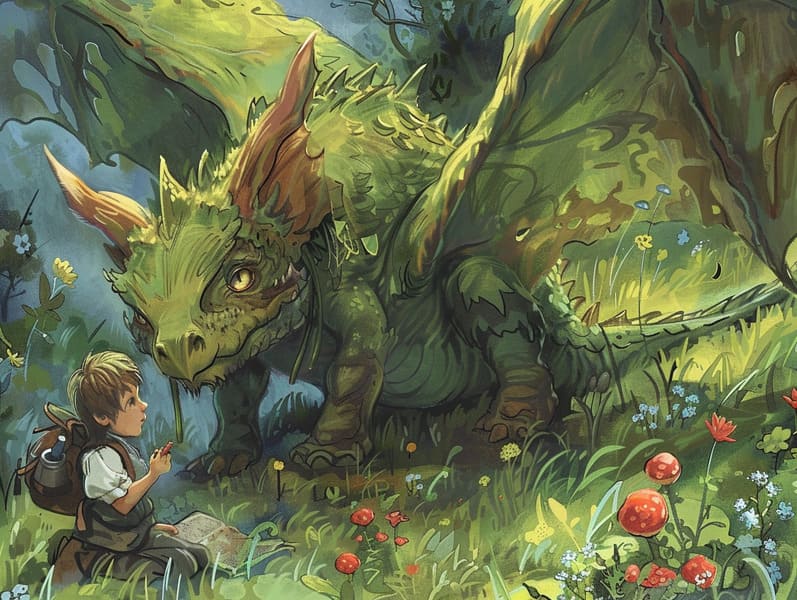The Emergence of Grimm's Fairy Tales with Its Unwavering Appeal.
The Emergence of Grimm's Fairy Tales with Its Unwavering Appeal.
Blog Article

Children's fairy tales have historical significance. These tales have been transmitted from one generation to the next well before they were ever published. They sprang from a variety of cultures, including Middle Eastern traditions. They were initially narrated among older generations, often carrying themes and messages relevant to the societal norms and beliefs of the time.
The Brothers Grimm, Jacob and Wilhelm Grimm, were among the first to assemble many of these beloved stories. Their compilation, "Grimm's Folk Tales," included narratives like "Cinderella," "The Story of Hansel and Gretel," and "Snow White," which have since become cornerstones in the world of classic fairy tales. Similarly, Andersen's enchanting fairy tales, such as "The Story of the Little Mermaid," and "The Duckling that Could," have enchanted hearts worldwide, securing their place in the pantheon of timeless fairy tales.
Even though they are old, traditional fairy tales remain as relevant as ever, especially as children's night stories. These whimsical stories are now available in diverse formats, including vividly illustrated books, magical animations, and online fairy tales.
Their ongoing significance can be linked to several enchanting factors:
Crucial Morals: Old fairy tales often provide important moral lessons. Stories like "The Shepherd Boy and the Wolf" teach the benefit of truthfulness, while "The Story of the Tortoise and the Hare" stress the merits of resolve and modesty. These narratives offer children clear distinctions between ethical and unethical, building their moral compass in a tender yet lasting way.
Warmth and Understanding: Ancient fairy tales frequently illustrate characters facing challenges and problems, encouraging young listeners to comprehend with their struggles and champion their triumphs. For instance, "Beauty's Beast" highlights the necessity of looking beyond appearances to comprehend the inner spirit of a individual, encouraging awareness and awareness.
Cultural Perception: Many timeless fairy tales are infused with the cultural contexts from which they arose. Engaging with these stories can provide fascinating glimpses into different cultures, cultivating a sense of global insight and discernment.
Fantasy and Imagination: The fantasy-filled elements in traditional fairy tales—magical spells—enhance children’s imaginative ideas. These stories lead readers to fantasy realms, triggering fantasy-filled thoughts and a sense of wonder that lasts a lifetime.
Ancient fairy tales are not only charming but also educational. They work as captivating tools in fostering various intellectual and emotional capacities in kids. When classic fairy tales are read aloud, they boost verbal skills by showing new terms and meanings and intricate sentence structures. This practice also advances auditory skills and mindfulness, as young ones follow the story, anxious to see what happens next.
Furthermore, contemplating the themes and characters of ancient fairy tales can advance intellectual skills and reasoning skills. Young ones are educated to discover patterns, foresee events, and catch on to cause and effect. These debates also promote young ones speak out their thoughts and feelings, promoting their emotional intelligence.
In today’s information age, the presence of digital fairy tales has made these fairy tales more acquirable than ever. Digital sites and applications extend extensive collections of ancient fairy tales that can be explored or played anytime, anywhere. Fairy tales spoken are particularly widespread, featuring an fascinating method for the young to delight in these fascinating tales. Read-aloud stories and voiced videos take characters and settings to life, often paired with delightful background sounds and instrumentals that augment the storytelling experience.
The enduring charm of traditional fairy tales lies in their ability Grimm's fairy tales collection to evolve to modern times while staying true to their central values. Contemporary updates of these narratives often feature more varied figures and modern settings, making them meaningful to today’s audience. However, the central morals of gallantry, kindheartedness, and fair-mindedness remain unchanged, continuing to touch audiences of all ages.
Fairy tales also offer a sense of assurance and knownness. They highlight a systematic narrative with a transparent beginning, middle, and end, often drawing to a close with the ending of conflicts and the triumph of virtue over vice. This regularity can be soothing for young readers, introducing a sense of solidity in an inconstant world.
Classic fairy tales continue to mesmerize and coach new generations, maintaining their allure and pertinence in modern society. As kids' bedtime tales, they put out a perfect blend of delight and instruction, advancing moral values, empathy, and creativity. The abundance of free fairy tales online and the popularity of fairy tales read out loud assure that these timeless tales remain available to new generations.
By protecting and spreading these stories, we continue to glorify the rich tapestry of human imagination and cultural heritage. Whether you are discovering a artistically illustrated book, delving into a online library, or listening to an spoken story, the attraction of famous fairy tales is always within reach. These stories illustrate of the continued force of stories and its ability to tie us across generations and cultures.
Regardless if you are exploring a gorgeously illustrated book, enjoying a cyber library, or playing an spoken story, the charm of timeless fairy tales is always within reach.
These stories show us of the steadfast essence of fairy tales and its ability to hold us together across generations and cultures, making a tie that fascinates and enlightens alike.